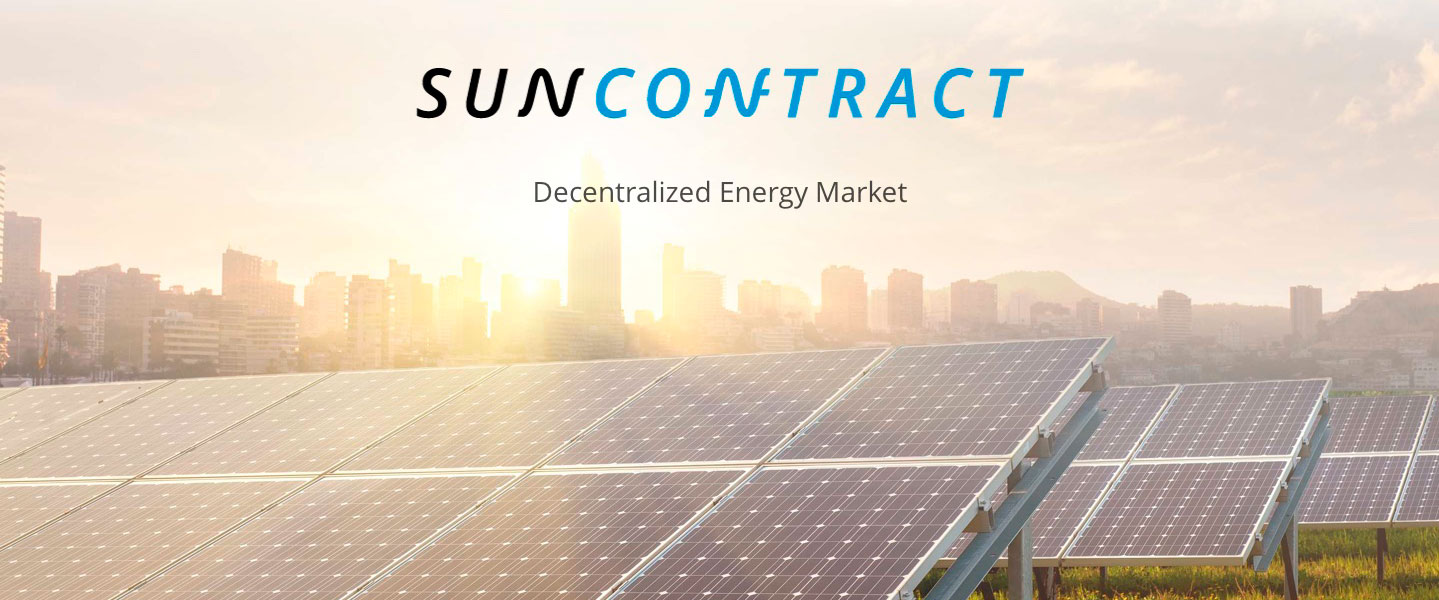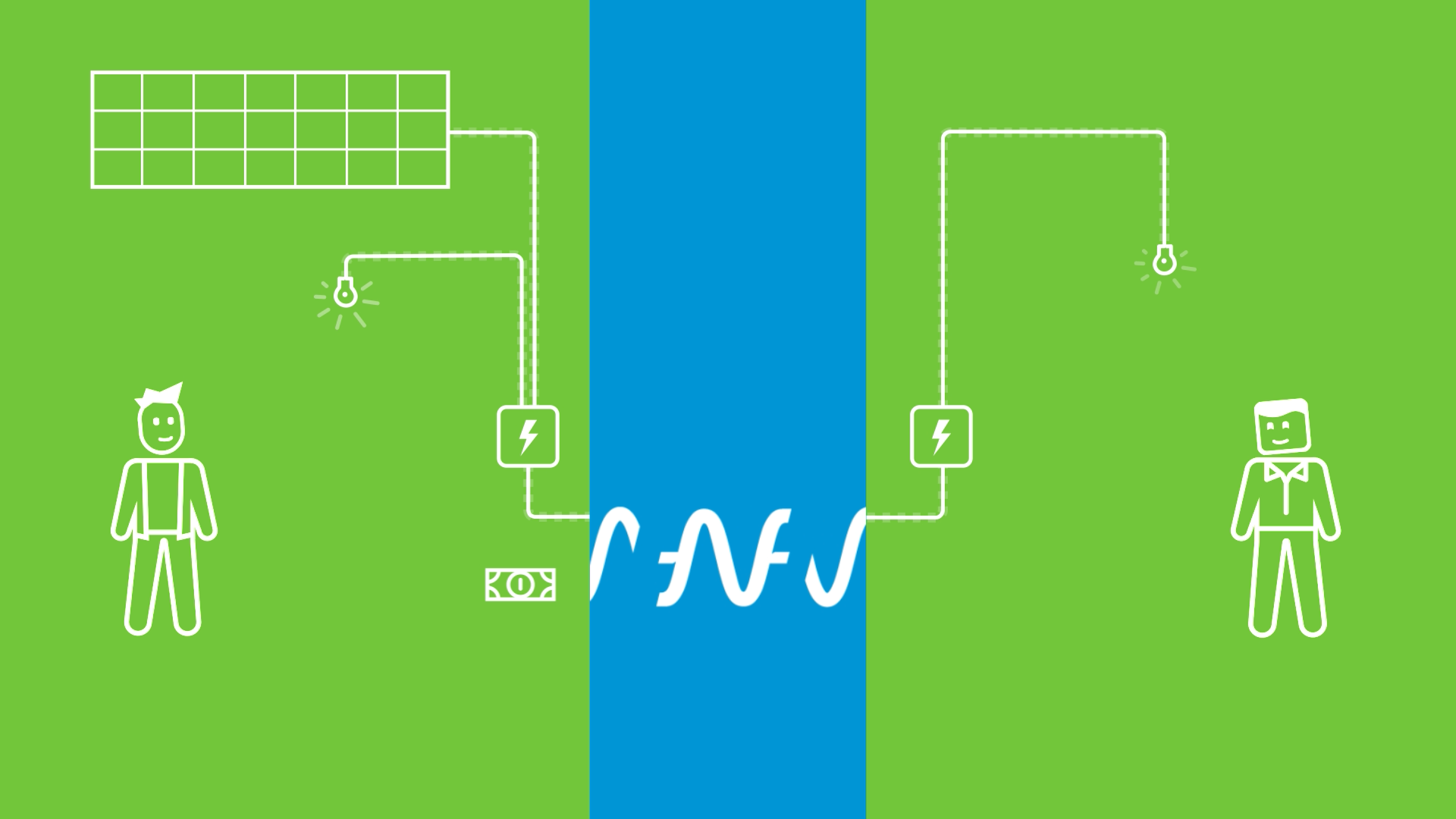Suncontract - Decentralized Energy Market

The SunContract is a Slovenian start-up project that wants to stimulate innovation in the rigid energy sector by utilizing blockchain technology. A decentralized platform will enable direct trading with electricity between producers and consumers, while transparency and efficiency will be guaranteed through the Ethereum blockchain.
The Energy Sector Today
There are many questions regarding the transmission of energy, home supply and payment methods in the SunContract energy system. The answer is pretty straightforward: the classic connection between the consumer and the national grid system will not change dramatically.

The energy market currently looks like this: the biggest sources of electricity generation are the big power plants fuelled by coal, uranium or the power of rivers. Only a small portion of that production comes from small producers such as solar power plants, wind turbines, cogenerations, etc. Big retailers then buy this production cheap and sell it at a higher price directly to end users like households, small and medium businesses and sometimes also to big energy consumers.
Customer price also includes the costs of balancing and deviations. Those costs appear when there is a difference in predicted production and consumption. The grid system has its own schedules (timetables) for energy distribution and consumption that are predicted in advance (for the next day or week) and when there is a shortage of electricity, the retailer has to buy this deficit. As you can imagine this is not cheap.
Optimization of production and consumption with the introduction of batteries and smart grids would lower the volume of these imbalances and increase the reliability of forecasted schedules.
National governments regulate the energy sector. The European Parliament introduced rules for the single European energy market that puts some common directives on how the energy market should work in the EU. Rules promote competition and better selection for consumers. This new legislation enables customers to easily change their energy supplier.
Member states have to harmonize the rules of internal markets to achieve an efficient and competitive single energy market. Common rules dictate the course of legislation inside the EU, which suits projects like the SunContract that want to expand their business model throughout the Union. Liberalization of the energy market plays a vital role in such business models. With a single European energy market directive this condition is met.
.gif)
Idea
What can a small start-up project do in a rigid energy market that demands huge initial investments? Usually, when one tries to introduce innovation into the energy sector, one would get a “friendly” reminder to leave everything as it is and stick with the current model.
However, the potential is enormous. Blockchain innovation is opening energy market doors to ideas that seemed to be next to impossible just a short time ago. Blockchain technology relies on a network of computers that validate transactions together, which guarantees a common consensus on the data written on the public ledger. This system is completely transparent as it does not allow the changing of past data. With that feature, one can have a total overview of information , which establishes a high level of trust in business and trading with electricity.
.gif)
This is where the SunContract steps in. The SunContract will provide an opportunity for the emergence of alternative electricity distribution that meets the national jurisdiction criteria and utilizes blockchain technology. The current energy system will be upgraded with blockchain advantages such as flexibility, efficiency and transparency.
This new technology allows direct peer-to-peer trading, which means that the consumer will be able to buy electricity directly from the owner of a small power plant. Business processes (such as administration, decision making, operations) will be digitalized and optimized as well . The project will provide a better customer experience with a higher level of transparency – data will be published on the blockchain, which makes transactions and transmission of electricity public. Anonymity will be provided; only the owners of the public key will know their own address. There are also possibilities for improvements in the future because the technology is still under development.
Peer To Peer
In a peer to peer system, computers communicate with each other without the middleman. What this means for the SunContract is that one will be able to buy electricity directly from anyone inside the pool.
Individuals will be able to choose who will be his or her producer, which effectively means that trade will be performed between the customer and producer. All aforementioned mentioned processes will be automatized on the SunContract platform and adjusted to mainstream users.
The CEO of SunContract Gregor Novak:
‘Applications, where the user will not realize that he or she is using blockchain technology will be the best example of blockchain use. App design has to be mainstream user-friendly. In a way, the Platform will be a global Uber system for the energy market. It will work as a global standard while services will be offered locally.’
Energy has some market laws that cannot be ignored such as the existing energy grid and the managing of imbalances. Grid management will stay in the hands of state authorities, while trading with energy will be transferred to the Platform. It will be designed in such a way that the system can be implemented anywhere in the world. The business model will be pretty much the same everywhere with small adjustments and low costs.

The president of the Slovenian Bitcoin Association, Jure Pirc, who created his own cryptocurrencies, said for the Nedelo newspaper that ‘the technology behind a decentralized Bitcoin network is something that will bring new solutions and automatize processes on many different markets and sectors. Financial instruments are just the first example of using blockchain technology.’ So why would we not use these innovative solutions also in the energy sector and make it more user-friendly?
Take a look at http://www.suncontract.org
Bitcointalk thread https://bitcointalk.org/index.php?topic=1934763.0
Twitter https://twitter.com/sun_contract
LinkedIN https://www.linkedin.com/company/22304821/
Exchange HITBTC https://hitbtc.com/SNC-to-ETH